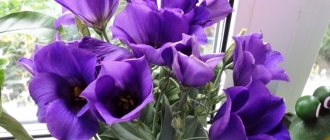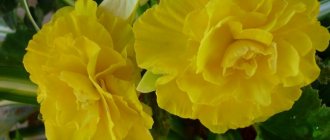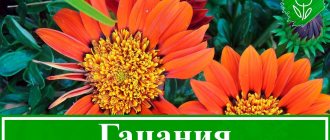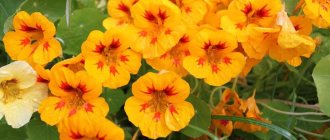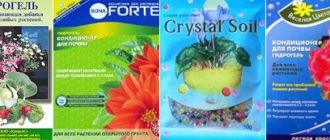- Description of eustoma
- Types and varieties of eustoma
- Russell's potted eustoma (Eustoma Russelianus)
- Garden eustoma grandiflorum (Eustoma Grandiflorum)
- Planting eustoma for seedlings
- Soil for growing eustoma
- Caring for eustoma seedlings and seedlings
- How to grow eustoma in peat tablets
- Prevention of diseases of eustoma seedlings
- Growing potted eustoma: care at home
- Watering and feeding eustoma
- Lighting and temperature conditions
- Eustoma flowering
- Eustoma after flowering: dormant period
Eustoma or Irish rose is a beautiful legendary flower native to North America. Despite its overseas roots, this culture has successfully taken root in our country.
Lisianthus is also grown by enterprising people, because a cut flower can stand in a vase for 18-20 days.
First of all, this plant is grown for cutting. Beautiful flowers, reminiscent of delicate silk half-opened roses, last a long time in bouquets. A wide palette of colors, the tenderness of the flower with amazing durability always surprises. Eustoma is grown as a garden, greenhouse, and indoor crop. And in any capacity, the plant will require very careful care, but even a novice gardener, having received the necessary knowledge about planting and care, will be able to enjoy a flowering plant in the garden or at home.
Description of eustoma
Known among flower growers also under the name of Russell's lisianthus, Irish, Japanese rose, Texas bell or love rose, eustoma is one of the most beautifully flowering crops. In both horticulture and floriculture, it is represented by only one species - grandiflora eustoma (eustoma grandiflorum).
Previously, three separate species were recognized in the genus Eustoma. However, joint work by employees of the Royal Botanic Gardens at Kew (UK) and the Missouri Botanical Garden (USA) to streamline the nomenclature of modern plant taxa, united the following species under a single name - Eustoma grandiflorum: Eustoma grandiflorum, Lisianthus - Eustoma Roussel's, or Russell's (Eustoma russellianum), Eustoma minor, Gentian minor, Western gentian, Blue marsh Eustoma (Eustoma exaltatum).
Wild form of eustoma.
Eustoma grandiflora is a luxurious plant from 30 to 90 cm in height with branched shoots, simple, elegant leaves with a bluish tint and flowers reminiscent of a hybrid of roses and poppies. Up to two dozen large luxurious flowers bloom on one plant per season, and due to the fact that they open not simultaneously, but alternately, eustoma remains attractive for an amazingly long time.
The ability of buds to bloom after the flowers wither is also preserved in bouquets: when buying eustoma or displaying it in vases, you can be sure that each bud will in turn turn into a beautiful Japanese rose. Each plant looks like a bouquet: due to its specific branching, strong, but slender, fan-shaped, eustoma really seems like a bouquet planted in a pot.
Eustoma, cultivar 'Borealis Blue' and yarrow cultivar 'Moonshine'.
Flowering of eustoma depends on the timing of sowing and begins 20 weeks after sowing. For classic garden eustomas, it starts in June-August and lasts until mid-autumn, because the plant will not stop delighting with flowers until the frost reaches -10 degrees and snow falls.
The color palette of eustoma today includes not only white, purple, pink, yellow, orange colors, but also various two-color and watercolor combinations. Compact indoor eustomas have colors that are usually clean and quite bright, while garden ones have a much wider range of colors. It even includes light green and fruity shades.
Variety of colors of eustoma.
The huge assortment of eustoma and its popularity all over the world are the merit of breeders in the USA and Japan. In the West, this plant is one of the most popular cut species, but here, too, this Japanese beauty is slowly gaining ground.
Lisianthus series and varieties: descriptions with photos
Selection work with lisianthus has not stopped to this day. New series are constantly appearing, within which a wide range of varieties of various types and colors is presented.
Varietal series are divided into two large groups:
- tall - reaching a height of up to a meter or even more, planted in open ground for cutting;
- low-growing - compact varieties, perfect for growing at home on a windowsill.
The difference exists not only in the size of adult plants, but also in the shades of the petals; within each group there are plants with double and simple flowers. Most of the seed material comes from the USA and Japan. So far, breeders have not been able to breed climbing eustoma. Under the guise of a climbing lisianthus, the gardener will, at best, get a climbing or park rose.
Tall
ABC F1 is a series of double annual lisianthus. The height of the stems reaches 75–100 cm, the inflorescences are large, 5–6 cm in diameter. Series varieties: Blue border, Blue haze, Blue blush.
Kyoto F1 - this series represents a selection of tall (up to 90 cm) varieties with simple, non-double flowers, early flowering. Representatives of this series: Picot Wine Red, Picot Pink, Picot Blue, White Kyoto.
Photo gallery: eustoma series ABC and Kyoto
The Blue Border variety looks unusual and attractive
The Blue Haze variety is named for the smooth transition of colors in color.
The Blue Blush variety is distinguished by a gentle transition from light to rich tones
Kyoto White is the most common in the series
Echo F1 is another series of tall eustoma, bred by Japanese scientists, with stems up to 70 cm long, simple flowers, classified as annuals. Bouquets of plants on tall, strong stems look great as cut flowers.
Photo gallery: Echo series for open ground
Flowers of the Echo Yellow variety are painted in delicate shades of lemon Piccoti pink are collected in lush inflorescences
Rich blue color of the petals of Echo Blue
Bouquet of eustoma Echo Pink
Flamenco F1 is a series of tall eustoma (up to 70 cm), with large, up to 7 cm in diameter, simple (non-double) flowers. An early-flowering variety, annual, flowering begins 2 weeks earlier than others. The most common varieties are Yellow, Lime, and Pink.
Arena F1 is a series of lisianthus with stem heights of 80–100 cm. Double flowers up to 7 cm in size are painted in a variety of shades; manufacturers classify the variety as annual. Lush red flowers are collected in luxurious inflorescences.
Photo gallery: annual plants of the Flamenco series, Arena
The bright red color of lisianthus Arena Red will not leave you indifferent Representative of tall varieties of lisianthus Flamenco Yellow
Delicate inflorescences of the Flamenco Lime variety
The Piccolo F1 series is represented by a line of tall varieties of lisianthus, annual, with stems 70 cm long, and simple large flowers.
Japanese breeders presented the Wonderose series - tall plants (up to 70 cm), annuals, forming lush caps of simple large flowers. The most famous varieties are Light Brown, Ash.
Photo gallery: eustoma of the Piccolo and Wonderose series
A bouquet of two-color eustoma Piccolo looks unusual. Lisianthus Piccolo petals bordered with purple and blue, Northern Lights variety. Snow-white flowers of eustoma Piccolo White attract the eye. Eustoma variety Wonderose Light Brown has petals painted in light shades of brown.
The delicate border of eustoma petals especially attracts attention.
Universal (for garden and windows) varieties
There are eustoma seeds on sale with stem heights up to 50 cm. Such plants are planted both at home and on the site.
Twinkies - a series with flowers 50 cm tall, spirally arranged simple flowers. There are many varieties, the most common are Pink, Blue-violet, Yellow.
Cinderella F1 is a series of eustoma with stem heights up to 50 cm, annual, with simple flowers of various colors.
Photo gallery: series for home and garden
The Twinkie variety Blue-violet will attract the attention of guests
Flowers of the Twinkie Pink variety collected in a bouquet
The delicate pink color of the petals highlights the Cinderella Pink variety
Low varieties - can be grown in pots
Compact varieties do well at home. Manufacturers have developed many series with small-sized plants. Here are some of them.
Eustoma Mermeid (Little Mermaid) F1 is a series of low-growing lisianthus. The height of the stems is about 15 cm, the flowers are simple 6 cm in diameter, perennial. Varieties: White, Lilac-pink, Soft pink, Blue, Mixture.
Photo gallery: Mermaid's long-running series (The Little Mermaid)
Potted form of Lisianthus Mermaid White
Eustoma Mermaid Soft pink in containers for growing in an apartment Bouquet of Lisiathnus Mermaid Blue
A very compact series, ideal for home breeding - Sapphire F1. A perennial potted plant, 13–20 cm high, flower size up to 5 cm, both double and simple varieties have been bred.
Photo gallery: blooming Sapphire series
Eustoma flower Sapphire White with simple large petals Sapphire Blue is perfect for growing in pots
Lisianthus Sapphire Pink in a pot - a wonderful home decoration
The Carmen F1 series is another representative of low-growing potted crops. Plant height is 20–25 cm, annual, flowers reach a size of 4–6 cm. Varieties: White-blue (with rim), Lilac, Rose, Ivory, Blue.
Florida F1 is a series of compact annual lisianthus 20–25 cm high, with double and simple flowers up to 10 cm in diameter. The most famous varieties: White, Sky Blue, Pink.
Photo gallery: Carmen and Florida room series
Low-growing variety of eustoma for the home Carmen Belaya
Carmen Pink looks elegant in a flowerpot
Lisianthus variety Florida White grows well in pots
Lush Florida Sky Blue bush will decorate the interior
Choose plants you like and let them delight you with beautiful flowering for a long time.
Russell's potted eustoma (Eustoma Russelianus)
This flower has a small compact bush, its height rarely exceeds 30 centimeters. Let's get acquainted with the most popular varieties of potted eustoma:
Mermaid variety. Lisianthus Little Bell.
The Mermaid variety has simple inflorescences up to 6 centimeters in diameter. The petals are pink-lilac or blue, the maximum height of the crop is 15 centimeters. The bush develops well and does not need pinching to form additional side shoots.
Lisianthus Light Bell is up to 15 centimeters tall with small simple inflorescences of different colors. The culture bushes well and does not require pinching of shoots.
Variety Fidelity.
Florida Pink variety.
Variety Fidelity is a beautiful flower with many white inflorescences. A feature of the culture is the spiral arrangement of peduncles.
The Florida Pink variety is a fairly compact bush up to 20 centimeters in height. The inflorescences are pink with simple petals that form a beautiful bouquet.
Rozzi variety. Variety Sapphire.
The Rozzi variety is one of the tallest crops of the species in question, its height reaches 30 centimeters. Double inflorescences with white, blue or pink petals.
Variety Sapphire with simple or double petals. The inflorescences have different colors, the height of the bush reaches 30 centimeters.
Variety Echo.
Variety Aurora.
Garden eustoma grandiflorum (Eustoma Grandiflorum)
As the name suggests, this crop is grown as a garden plant. The flower is quite tall, similar in appearance to a rose, and is used for cutting and making bouquets.
Let us describe the popular varieties of large-flowered garden eustoma:
The Aurora variety of double lisianthus reaches 1.2 meters in height. Inflorescences of white, blue and pink shades. The peculiarity of the flower in question is the early formation of buds; it blooms two weeks earlier than the others.
Variety Echo with spreading thick stems up to 70 centimeters in height. It blooms early, forms large inflorescences, the petals have 11 different shades.
Heidi variety.
Variety Eustoma Flamenco.
Variety Heidi . A medium-height species with simple, numerous inflorescences, it comes in 15 different color combinations. The height of the bush does not exceed 90 centimeters.
Variety Eustoma Flamenco up to 1.2 meters in height. The culture has powerful, well-developed stems and simple but large inflorescences, their diameter reaches 8 centimeters. The main advantage of Flamenco is its low maintenance requirements.
Variety Variety Twinkie. Variety Double White.
Variety Twinkie variety with simple inflorescences. Bushes up to 50 centimeters in height with pink, purple and yellow petals.
Variety Double White . A terry type with white inflorescences, a bush up to 70 centimeters in height, with powerful, erect shoots. It is low maintenance.
Appearance
Eustoma has a strong and graceful stem, branching from the middle into a peduncle. The latter throws out up to 40 buds. The leaves of the plant are oblong, dense, and have a grayish-gray color. The height of the bush can be up to one meter. The opened buds transform into large flowers resembling roses, and when fully open they become like poppies. This was noticed by the people and eustomas were instantly nicknamed the Irish rose.
Eustoma buds resemble roses
Sometimes the plant is called “prairie bell”, due to its virgin habitats. Its homeland is considered to be:
1. Mexico.
2. States of Nebraska, Colorado, Texas.
3. Northern regions of South America.
The natural color of the petals is purple, but today, the natural version is not so easy to find. Thanks to the efforts of breeders, colorful hybrids grow in gardens. The flowering period occurs in the summer months and autumn.
Eustoma purple
Planting eustoma for seedlings
The seeds of the crop in question are quite small; they are supplied to stores in the form of pills. You can collect your own seeds if you have these flowers on your site, but in this case the difference between the parent and subsequent forms will be more and more felt every year.
Collecting seeds for seedlings:
- In order for the seeds to ripen, it is necessary to remove some of the inflorescences and move the plant indoors at the end of autumn.
- When frost occurs, the plant pots should be taken to a warm place and trimmed, leaving two pairs of leaves.
- Provide a temperature of 8 - 10 degrees, reduce watering, stop fertilizing. The flower remains in this state until March.
- The plant is well pollinated by insects and produces seeds in special boxes. Collecting such seeds is not difficult.
- First and second generation hybrids tend to inherit the traits of the parent plants, so feel free to collect seeds from your lisianthus plants within two years.
- Third-generation hybrids will not inherit the characteristics of the original plants, but as an experiment, you can try to sow seeds collected from third-generation plants.
Irish rose seeds.
Note! Coated seeds do not require preliminary preparation, because their shell already contains a sufficient amount of microelements and other nutrients.
Lisianthus annual and perennial
In its homeland, lisianthus is a biennial plant in nature, but when grown in open ground it is used as an annual plant, since its delicate root system cannot withstand winter cold. This is not surprising if we remember the origin of the flower - there is no frost in its homeland. Although scientists have developed varieties that are resistant to low temperatures, the geography of year-round cultivation of eustoma in the garden in our country is limited (in winter the air temperature should not be lower than +10°C).
At home, eustoma can be cultivated for more than one year, but according to reviews from amateur flower growers, even under favorable circumstances, the plant degenerates after two years and does not produce the expected flowering. Therefore, lisianthus are often grown as indoor flowers for one year and discarded after flowering.
There are many varieties of eustoma seeds on sale for every taste.
The seeds of this flower are almost always sold labeled “annual”. If you want to extend the life of a plant planted in open ground, when frost approaches, you need to dig it up entirely and store it at home. With proper care, there is a chance that in the spring the eustoma will begin to grow and will delight you with flowers for another season.
Soil for growing eustoma
We prepare the soil for sowing seedlings from equal parts of peat, garden soil and sifted sand. The end result should be soil with a neutral acid reaction. You can use Saintpaulia soil from store-bought mixtures.
Before moving to seedling containers, the soil is disinfected in a solution of potassium permanganate or placed in the oven for 30-40 minutes. There the earth is calcined at maximum temperature. The container for sowing can be special plastic boxes, disposable plastic cups or peat humus pots. Drainage from small pebbles is placed in the boxes and only after that the nutrient substrate is filled in.
Seed germination should occur in the light, so the grains are placed on slightly compacted and moistened soil, but not sprinkled with soil. To destroy the protective shell, the seeds are lightly sprayed with a spray bottle, then the containers are covered with a plastic bag or glass.
On a note! For better germination, seedlings are placed on a well-lit windowsill in a room with a temperature range of +20...+25 degrees.
Before emergence, the soil should be moistened with a spray bottle as needed. With the right approach, the first shoots will appear within two weeks from the date of sowing the seeds. Next, remove the cover and begin to care for the young plants.
Caring for eustoma seedlings and seedlings
Measures to care for hatched seedlings consist of maintaining optimal daytime temperatures at 20..25 degrees. The room temperature at night should not drop below +16 degrees.
Eustoma seedlings in cassettes.
Eustoma seedlings begin to be grown at the end of winter with short daylight hours, so the flowers should receive additional lighting with phytolamps. In general, crops should receive up to 16 hours of natural and artificial light per day. Water the seedlings using a pipette or a small syringe in a targeted manner. To avoid the occurrence of diseases, chemicals such as Previkur or Fitosporin are added to the irrigation liquid.
Note! At a certain stage of development, flower seedlings may be delayed in growth, but there is no need to worry. At this time, the root part of the crop is growing, while the above-ground part of the flower stands still.
After about 2 months from the moment of planting, the first pair of true leaves will appear on the plants, which means that the plants need to be transplanted into a larger container, for example, a disposable plastic cup. During picking, the seedlings are carefully removed from the soil using a toothpick or an awl. Make a hole in the new soil with your finger or pencil and transplant the seedling there.
After the diving process, approximately 10 days later, we add liquid fertilizers for flowers to the soil. We place the seedlings on a well-lit windowsill, which will prevent them from being stretched out due to lack of sunlight. When the seedlings grow a little, they are planted again into permanent pots with a diameter of 6-8 centimeters.
Reviews
For eustoma, it is necessary to correctly compose the soil so that it has a pH of 6.5; with increased acidity of the soil, plant growth slows down and leaves chlorosis occur. Before the sprouts appear, water from the tray so as not to wash away the tiny seeds. Planted seeds must be ventilated.
Trefira
https://www.forumdacha.ru/forum/viewtopic.php?t=2764
I sowed eustoma in February as soon as the seeds arrived in the mail. The pot is kept warm, covered with glass, I constantly look at it and ventilate it. But there are no shoots. Yesterday I wanted to sow another plant in this pot and I saw tiny sprouts there that are simply microscopic with the naked eye and cannot be noticed. I went to my husband’s garage and took a magnifying glass and looked closely at the sprouts. When I read that she had small sprouts, I didn’t think they were so tiny.
Verulya
https://www.forumdacha.ru/forum/viewtopic.php?t=2764&postdays=0&postorder=asc&start=20
Moisten the soil prepared for planting eustoma well and spread the seeds over the surface; due to the fact that they are very small, they are usually sold in granules. Then cover the planting container with glass or transparent film, because eustoma requires light for germination, the temperature should be 20–21 degrees. After 3-4 true leaves appear, the plants are picked and placed in a cooler place. Grown plants are planted in the ground. The optimal temperature for eustoma growth at night is 15 degrees and during the day about 25 degrees.
Irma
https://www.forumdacha.ru/forum/viewtopic.php?t=2764
How to grow eustoma in peat tablets
Special peat-based tablets improve seed germination, and picking from such containers is much easier for plants. To grow Lisianthus seedlings, it is recommended to buy washers with a diameter of about 5 centimeters. They are placed several at a time in a food container and moistened with heated water.
When the tablets increase in volume, you need to drain the remaining liquid from the container and place one seed in the center of each of them. To speed up the destruction of the protective shell, the seeds are sprayed with water from a spray bottle. After this, the container is covered with film or glass and placed on a sunny windowsill. Seed germination occurs at a temperature of 20...25 degrees. After the formation of several true leaves, the flower seedlings are moved to a permanent pot.
Choosing a pot/container
You can grow indoor eustoma in a permanent pot to save yourself the need to pick.
If you plan to transplant it into a flowerbed in the future, you will need 3 types of containers:
- A plastic rectangular container with holes in the bottom - for germination.
- Plastic cups - for diving.
- 0.5-liter plastic glasses or peat pots (they do not need to be removed when transplanting to a flowerbed) - for transferring.
Prevention of diseases of eustoma seedlings
Coconut substrate and plant fibers are prone to mold. Therefore, before using it, you need to treat it with potassium permanganate or a fungicide.
When germinating seeds, be sure to ventilate to avoid the appearance of mold:
- To prevent black leg and fusarium rot, Fundazol is used.
- Recently, many flower growers have fallen in love with epin and zircon. These drugs stimulate physiological processes in the plant body and increase stress resistance.
Picking seedlings
- When four normal leaves appear, the plant is ready for picking. Seedlings grown in a container or peat tablets need to be planted in separate pots; sometimes two or three plants are allowed in one container.
- This procedure will speed up the growth of the flower, make the plant stronger, and improve the development of the root system.
- Using a thin object, carefully lift the miniature plant and remove it from the peat soil.
- A small depression is made in the pot where the picking will be done. The sprout is transferred into this depression.
- The soil should be well moistened. Deepening is carried out along the lower leaves.
- Immediately after the procedure, put on a protective cap (plastic bag or plastic cup). The plants are kept in this state for several weeks.
- As a rule, plants tolerate picking well. In two weeks, your seedlings will already be twice as large.
Picking seedlings at the age of 2 months.
Growing from seeds
Growing flowers from seeds is not difficult, but it requires a certain amount of time and knowledge. Beginning flower growers may make mistakes that can cause seed germination to decrease or not appear at all. This can happen due to improper agricultural practices or poor seed quality. In any case, you should not despair, but analyze your actions, correct mistakes and try to grow the eustoma again.
It is better to buy seed material in a specialized store that sells proven seeds. Eustoma seeds are very small and there are about 20 thousand pieces per 1 g of their weight. In addition, they have a low germination rate, only 30% will sprout. But if they are processed, the figure will increase to 40%. Usually, the packaging with seeds says that the seed has been processed (untreated seeds should not be taken). The seeds are sold in the form of pills, that is, they are placed in a special gel. This allows you to increase the percentage of seed germination and facilitates the process of sowing them.
How to sow seeds for seedlings
For sowing seeds, it is best to use a substrate of peat and humus from the bark of deciduous trees, taken in equal quantities.
You can also use a universal seedling mixture, which you can buy at a flower shop. It has already undergone a disinfection procedure and is neutral or weakly acidic.
You can sow the seeds in peat tablets, which must be soaked for 24 hours beforehand.
- The soil is slightly moistened so that it becomes soft.
- The seeds are distributed over the surface of the soil at a distance of 2-3 cm from each other, slightly pressing into the ground.
Important! The seed material is not covered with soil.
- I water the crops with warm water and spray them with a spray bottle.
- The containers are covered with film and several small holes are made in it using a needle or toothpick for air circulation and left in a warm place.
- Shoots should appear within 15 days.
- After the sprouts appear, the film is removed.
- The seedlings are sprayed with a solution of phytosporin to protect them from the appearance of fungal and putrefactive diseases.
Watch the video! Eustoma. Secrets of growing seedlings. Picking seedlings!
How to care for seedlings
Air temperature and lighting
It is necessary to monitor the temperature. During the day the temperature should be about 20-22 °C, at night the temperature should not fall below 14 °C.
The duration of daylight should be at least 12-14 hours, since lighting stimulates the life processes of the plant. If there is less daylight, it is necessary to organize artificial illumination of the eustoma.
Watering
Eustoma loves moderate watering without waterlogging the soil. It is better to water in the morning, so that by evening the leaves of the plant are sprinkled. It is necessary to constantly monitor the level of soil moisture, since if overmoistened, the eustoma can be affected by blackleg (rotting of the root system). In this case, it is almost impossible to save the plants.
Picking
45-60 days after sowing the seeds, the seedlings grow to 4-5 cm in height and 1-2 true leaves form on it. At this time, the seedlings are picked into separate cups, the diameter of which should be approximately 6 cm. The procedure must be carried out very carefully, capturing the seedlings along with a lump of earth, so as not to damage the weak root system.
- The cups pour fertile soil and make small holes according to the size of the root system.
- They transfer seedlings with a clod of earth into them.
- The root collar should be at the same level as before picking.
- After the procedure, the plants are watered with a phytosporin solution to prevent diseases.
- If the root collar appears above the soil surface after watering, it is necessary to add more soil.
- The seedlings are covered with a plastic bag to adapt them to a new place.
- When the rhizome of the plant completely fills the container, it is recommended to re-pick into cups of larger volume. This is necessary for the active growth of seedlings.
10-14 days before transplanting seedlings into open ground, seedlings must be hardened off. To do this, they take her outside for several hours. The main thing is to ensure that it is not exposed to direct sunlight.
Planting seedlings in open ground
Transplantation of seedlings to a permanent place is carried out in good weather conditions, when the risk of night frosts has passed.
- To plant eustoma, it is necessary to prepare a well-lit place in an area where there are no drafts and where it is not exposed to direct sunlight.
- The soil is dug up well, breaking up large lumps, removing weeds, and watering.
- The soil should be loose, nutritious, and breathable. Moisture in the ground should not stagnate, otherwise the plant will die.
- Before planting, 24 hours before the procedure, it is necessary to water the eustoma seedlings so that the soil becomes soft and moist. This will allow you to calmly pull out the seedlings along with a lump of earth without damaging the root system.
- Transplantation must be carried out extremely carefully, transferring the seedlings along with a lump of earth. The hole is dug according to the size of the root system. Water is poured into the holes so that the soil becomes soft and dirt forms. Seedlings are placed in holes and covered with soil.
Important! The root collar should be at ground level. It is possible in slightly recessed holes.
- The distance between plantings should be at least 15 cm; for tall varieties, the distance is 20 cm.
In the future, eustoma requires regular but moderate watering. In this case, it is necessary to monitor the amount of precipitation and air temperature. To maintain an optimal level of soil moisture, it is recommended to mulch the ground around the plant.
Due to abundant flowering, thin stems can lie down under the weight of the buds. For individual plants, pegs are driven in and the stems are tied to them. For large plantings, it is better to stretch a trellis from twine or wire.
Growing potted eustoma: care at home
In order for the Irish rose to develop well, it is necessary to create favorable conditions in the apartment. Let's get acquainted with some of the nuances of growing this plant.
An adult flower can grow to a significant size and will need to be moved to a new larger container. Eustoma does not like transplants, so the procedure must be carried out with special care. The plants are transferred from pot to pot, filled with new nutrient substrate and watered with warm water.
Caring for lisianthus in apartment conditions involves timely pruning and feeding of plants, maintaining the necessary air and soil humidity. Let's take a closer look at these procedures.
Combination with other plants
Eustoma is popular with both florists and gardeners. The plant looks great in mono bouquets and flower beds. The best neighbors for her will be lilies, roses, tulips, and chrysanthemums.
Watering and feeding eustoma
In summer, the flower needs regular watering, but with the arrival of winter, their amount is reduced. During this period, each subsequent watering is carried out when the top layer of soil dries to a depth of 2-3 centimeters. To carry out the procedures, soft rain or settled tap liquid is used. The crop needs high air humidity. To do this, you can place a container of water next to the plant or spray the liquid near the flower.
Note! If water gets on the leaves and stems of plants, it can cause sunburn of plants, so water should be poured only at the root.
Fertilizers are applied to lisianthus every two weeks. For this purpose, special store-bought compositions for flowers are used in the dosage prescribed by the instructions. In winter, nutrients are not added to the soil. During this period, the plant should be at rest.
Lighting and temperature conditions
During development, the flower must receive sufficient heat and light. An adult plant will delight its owner with lush, long-lasting flowering for a long time if the pot is placed on a well-lit windowsill. Lisianthus prefers bright but diffused light. In this regard, the plant must be placed on the windowsills of eastern or southwestern windows. In case of persistent drought in the summer, the crop needs to be shaded.
When growing eustoma, it is necessary to create a special temperature regime. In summer, this plant feels good at standard room temperatures within +18...+25 degrees. In autumn, temperatures begin to gradually decrease. With the arrival of winter, the flower goes into a dormant state. During this period, it is recommended to take the culture out to the balcony or to another room where you can set the temperature to +10...+15 degrees.
Eustoma flowering
If all care rules are followed, the first inflorescences on the plant appear 5 months after the formation of the first shoots. During flowering, the gardener must constantly pick off faded buds, which not only spoil the appearance of the flower, but also provoke the development of certain diseases.
Note! If the crop care is correct and timely, then repeated flowering can be observed within three months after the first wave of ovary formation.
Types of Irish rose eustoma - brief botanical information
Perennial eustoma is a delicate and luxurious flower that came to our country from Central and South America and immediately won the hearts of many gardeners. In nature, only blue and purple flowers exist, but thanks to the efforts of breeders, varieties of various shapes and colors have been developed.
The flower is original not only for its beauty, but also for its various names. In each country, the plant has its own name: in Ireland - Irish rose, in Japan - Japanese, in France - French love rose, and in Ireland - Irish rose or Texas bluebell. Eustoma is also called lisianthus, which means “bitter flower” in Latin. The flower received its second name for a reason, since it belongs to the Gentian family and contains a large amount of gentianin, genceopecrin and genteamarin. All these poetic names are true and show the love of many countries for this amazing and unusual perennial.
Lisianthus and eustoma are the same plant

